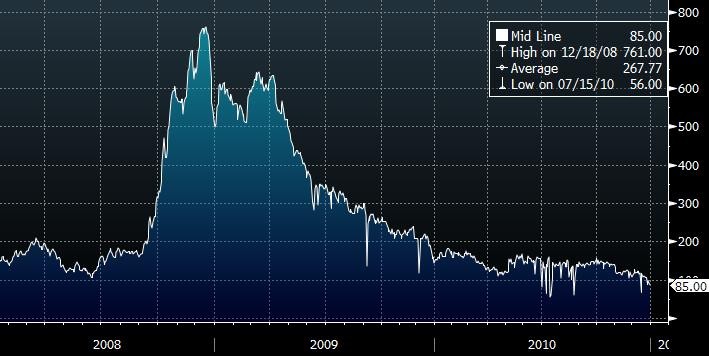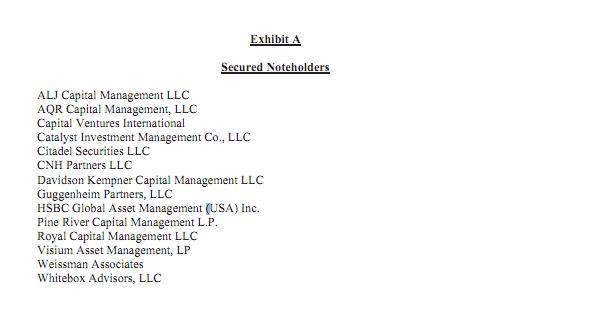Distressed Debt An Avenue To Profit In Corporate Bankruptcy
Post on: 1 Май, 2015 No Comment

Knowing how to value a company in or near bankruptcy is an important skill for profit-seeking investors. Equity investors rarely get paid anything in liquidation. but careful vultures that prey on the distressed debt of fallen companies can make big profits. These opportunities do not pop up everyday, but when they do, you should be ready to take advantage. Read on to learn how to be prepared.
Don’t Be Afraid
The first step is to simply not shy away from a company in distress. Many investors do, but a shrewd investor can’t afford to. When a viable company suddenly goes bankrupt, it is a messy scene. The investors in that company end up losing a lot of money. The stockholders will be lucky to get back anything, and the bondholders will likely lose quite a bit, if not all, of their principal. Interest payments will certainly cease. Investing in a company that may go bankrupt or is on the verge of collapse is scary business, but there are times when that scariness can lead to mispricings and opportunities for profit. (Read Finding Profit In Troubled Stocks for more information.)
It is rarely a good idea to buy the equity of a company going into liquidation. Equity holders are on the bottom of the ladder in the liquidation process, only receiving what is left after the owners of debt and preferred stock get repaid, which is usually nothing. On the other hand, debtholders have first claim to the company’s assets to recover their principal. This leaves room for big profits if the market overreacts when a company announces bankruptcy. Even if the assets will only pay back 40 cents on the dollar on the debt, the market may have knocked down the price to 20 cents, leaving room for a 100% gain. These opportunities are not common and require a lot of work, but with a little background; you can be on your way to identifying value in distressed debt. (For more information, see our article An Overview Of Corporate Bankruptcy .)
The first question is whether the company’s industry is economically sustainable. This is one of the most important factors to consider. If the company’s whole industry is going down, the assets might be worth much less. Looking at a company’s balance sheet. there is no reason to discount cash and cash equivalents. Accounts receivable should be discounted, if necessary, to account for possible additional bad debts. (Check out What Is A Cash Flow Statement . to learn how this valuable weapon works.)
Fire-Sale Prices
The similarities to valuing a viable company end here. Everything else must be looked at in terms of the industry, and what someone, if anyone, will pay for the liquidated assets. The discounting of inventories should take the industry into account, along with how specialized the inventory is. A company that makes plain toasters may be able to sell its inventories to a viable toaster company for half the inventory value. A company that has high inventory that is highly commoditized (relies on commodities like silver for flatware or cotton yarn for t-shirts) will be able to recognize the full commodity prices, even if its whole industry is collapsing. However, a company with an inventory of last year’s toys that did not sell may recognize very little cash back, or may even need to pay to have it junked.
For example, a bankrupt aluminum baseball bat company might be able to sell its bats to Louisville Slugger for 50% of the value, but if the company’s inventory is mostly aluminum, the company can sell it to anyone for the full price in the market. Such valuations should be taken on a case-by-case basis, but with common sense and research, a reasonably sound valuation can be obtained.

Similar ideas can be brought to property, plant and equipment (PP&E). Property can be valued by looking at similar properties in the area, if possible. What is on the property could increase, or even decrease the value. If the industry is viable, and the plants and equipment are up to date, they should be discounted only slightly. If the plant and equipment is old and less advanced, a competitor may have to pay to have it removed or demolished. The same is true if the industry itself is falling apart. If this is the case, the discarding of the equipment will knock down the value of the property. The future usefulness of the equipment and building is a major determinant of their value, whether positive or negative. (To learn more about commercial real estate, see Exploring Real Estate Investments .)
Lastly, important consideration should go into the level of debt you are buying. List the types of securities the company has and the order they will get paid. If the company has $8 million of assets, $8 million of senior debt, and $2 million of junior debt, the senior debt might be a great buy, but the junior debt would have no shot of being repaid. Keep all of this in mind, and keep your eyes out. Many investors don’t want to deal with this work, but big profits can be made by looking into distressed debt. (The balance sheet can affect the performance of an investment. Read Testing Balance Sheet Strength . to learn how to analyze this useful tool.)
The Bottom Line
The fact that most investors flee from a company going bankrupt is understandable, but it can also create opportunity. Following a careful valuation, those fleeing investors can drive distressed debt down so far that it creates profits. If you follow the tips above and scrutinize the books carefully, you can give yourself another way to profit in the market.














